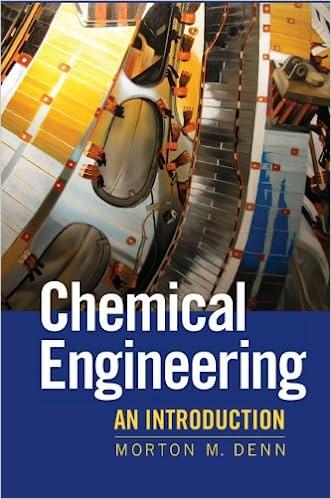The mean residence time in a tubular reactor is the length L divided by the average velocity
Question:
The mean residence time in a tubular reactor is the length L divided by the average velocity v = q/π R2. Using the results from Problems 7.8 and 7.9, what can you say about the relative values of the mean residence times in tubular and continuous flow stirred-tank reactors to achieve the same conversion for a first-order reaction? Can you generalize this result to an nth order reaction?
Problems 7.7
The decomposition of the carcinogen N-nitrosodiethylamine (NDEA) in water was shown in Example 6.3 to be first order when exposed to ultraviolet radiation at an intensity of 1 mW/cm2, with a rate constant 0.59 min−1.
Problems 7.8
Generalize your result to Problem 7.7 as follows: A first-order reaction is to be carried out in a batch reactor and in a CFSTR to achieve a relative reduction RR in concentration. (In Problem 7.7, RR = 100.) Compare the required time tB in a batch reactor to the required residence time θ in a CFSTR to achieve the same RR.
Problems 7.9
Follow the approach in Section 5.7 to derive the equation for the dependence of concentration on spatial position in a tubular reactor of length L operating at steady state, in which the radius is R and the volumetric flow rate is q. Assume that there is a single reaction. As in the membrane example, you may assume that there is no mixing in the axial direction, but that the concentration is uniform over any cross-section orthogonal to the direction of flow. How does this equation relate to the equation for the batch reactor?
Step by Step Answer:






